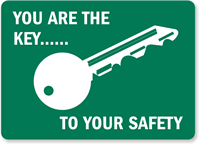Why do planes still crash?

This is an interesting article to share with
all the Aviation Community, was published two years ago.
So, lessons learned why accidents happened, the
contents of this article explain some good aspects the clear and realistic
lessons that have evolved from these accidents. In turn, all Pilots will learn
ways to customize those lessons into practical techniques that incidents or accidents
can happen to any crew no matter how much flight time you are gathering during
your career as a Pilot. Fly safely all the time!!!
Improving Aviation Safety is the KEY,
Safety is everybody’s Business !!!
Why do planes still crash?
Editor's note: Bill Voss is president and CEO
of the Flight Safety Foundation, a group dedicated to improving aviation
safety. He was previously director of the Air Navigation Bureau at the
International Civil Aviation Organization, and spent 23 years working at the
U.S. Federal Aviation Administration.
(CNN) -- By now, everyone should know that
aviation is the safest way to travel: Even in parts of the world with a
"high" accident rate, that rate is still far below other ways to get
from point A to point B.
This level of safety is due to a tradition of hard
work and technological advances that must continue.
New threats emerge every day, but through
proactive efforts in data collection and analysis, we don't have to wait for an
accident anymore -- we can mitigate these risks before they become real problems.
So how do we square those facts with terrible
tragedies such as Air France 447? Plane crashes do still occur, even with
state-of-the-art aircraft. Everyone in the industry must continue to work hard
on safety.
With the Air France 447 final report published
this week, we now have a clearer picture of the events that led to this
tragedy. The report concluded that a series of errors by pilots and a failure
to react effectively to technical problems led to the crash.
We already knew much of what we happened that
evening: The autopilot shut itself off when the air speed indicators failed and
the plane "handed itself" to the co-pilot. For the next several
minutes, it should have been a pretty benign situation, but the flight crew
made some inexplicable decisions and ultimately the plane crashed in the ocean.
What we must now try to understand is why the
pilots reacted the way they did.
In the past decade, we've seen tremendous
advances in automation in the cockpit. This automation has proven to be vital
to raising the level of safety in aviation even higher and also to provide more
efficient airline operations. It has removed some of the threat of human error
during normal operations. Pilots now spend most of their time monitoring the
automation.
But what happens when the automation turns
itself off or fails for some reason?
Q&A: Has Air France Flight 447 mystery been
solved?
The elephant in the room has always been that
training standards have not kept up with the technological changes in aircraft.
In the early days of aviation, training
included how to recover from some of the most commonly-faced emergencies, such
as a lost engine during takeoff. These scenarios are no longer common, yet the
training has not changed significantly to recognize this new reality. Automation
used to be the pilot's assistant. Now the pilot is expected to back-up the
automation. That is a fundamentally new task that the industry hasn't trained
for.
Regulators around the world need to acknowledge
this and work to change the basic requirements in training programs.
Pilots need to know what it feels like to stall
at high altitudes and train on how to recover. They need to know what to do
when an airplane is suddenly handed to them during an abnormal flight situation
by the autopilot turning off. They need to learn what to do and perhaps most
importantly, what not to do in order to avoid increasing risk.
Some of this will require a renewed emphasis on
manual flying skills, but new training will also have to be developed to
address the fundamental new relationship that has developed between man and
machine.
There are a number of airlines around the world
who are already changing their training standards to reflect this and we
applaud this effort. All airlines should do this. They should not wait for
their regulators to act.
As with any tragedy, there will be a temptation
to focus on blame and political posturing, but AF447 is a case where
politicians and judges should keep a respectful distance. There is some serious
technical work to be done, and the aviation community needs to act quickly and
objectively.
It is a responsibility that the entire aviation
community embraces and we are confident that the safety professionals will find
solutions that ensure that tragedies like this don't happen again.
It is a debt we owe to those who have been
lost.






